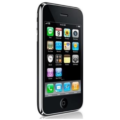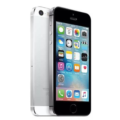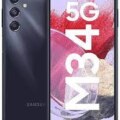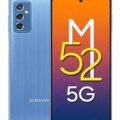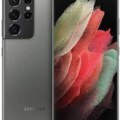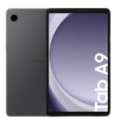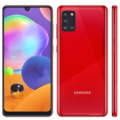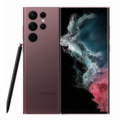- Home
- All Products
- Mobiles
- Apple iPhone 5c Price & Specs
Apple iPhone 5c Price & Specs
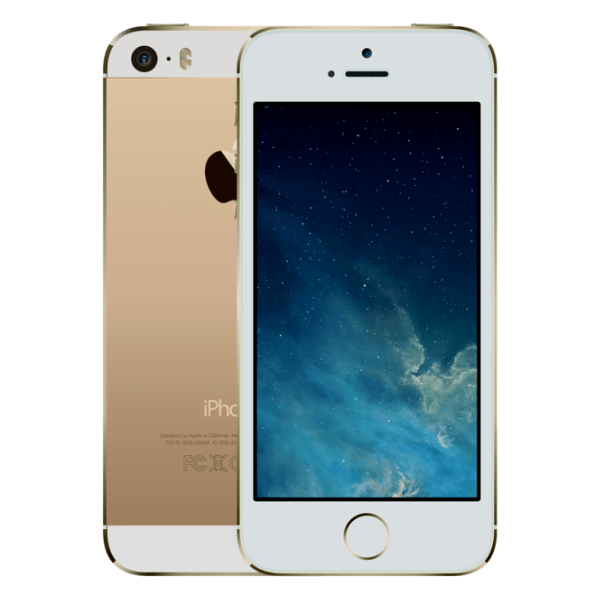


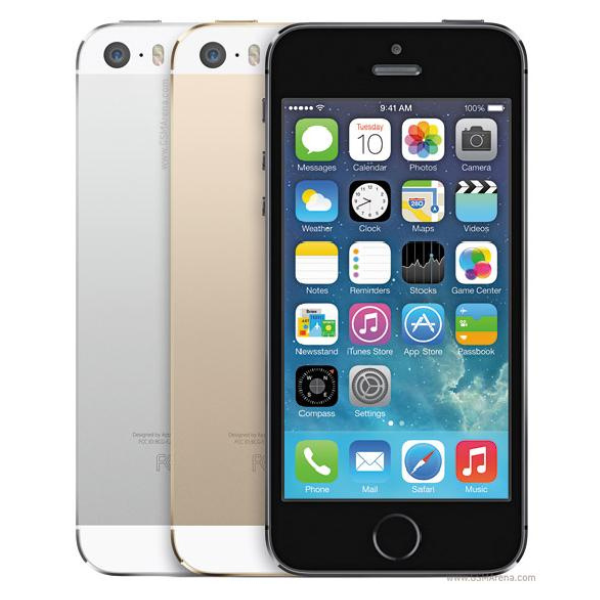
-
Processor: Apple A6 (32 nm)
-
RAM: 1 GB
-
Storage: 8 GB, 16 GB, 32 GB
-
Display: 4.0 inches
-
Camera: 8 MP
-
Battery: iOS 7
Specs
General
| Device Type | Smart Phone |
| Model | Apple iPhone 5c |
| Announced | 01 September, 2013 |
| Released | 01 September, 2013 |
| Status | Discontinued |
Network
| 2G Network | 850 / 900 / 1800 / 1900 |
| 3G Network | 850 / 900 / 1700 / 1900 / 2100 |
| 4G Network | LTE band 1(2100), 2(1900), 3(1800), 4(1700/2100), 5(850), 8(900), 13(700), 17(700), 19(800), 20(800), 25(1900) |
| SIM <strong>SIM</strong> (Subscriber Identity Module) is a small card that contains mobile network subscriber's account information. This allows the phone using the card to attach to a mobile network. The SIM card is most commonly associated with GSM and UMTS mobile networks. Moving a SIM card from one phone to another allows a subscriber to switch mobile phones without having to contact their mobile network carrier. SIM cards can also be used by a phone to store limited amounts of data, such as phone numbers and text messages. | Micro SIM |
Design
| Type <strong>Design Type</strong> called form factor refers to a mobile phone's size, shape, and style as well as the layout and position of major components of phone. There are three major form factors seen in mobile phones => bar phones, folding phones and sliding phones. | Bar |
| Dimensions | 4.90 x 2.33 x 0.35 inches |
| Weight | 132 g |
| Colors | White, Blue, Green, Yellow, Pink |
Display
| Display Type <strong>Display Technology => </strong> A number of display technologies and types used in mobile phones => TFT (Thin Film Transistor), IPS (In-Place Switching), OLED (Organic Light Emitting Diode), AMOLED (Active-Matrix Organic Light-Emitting Diode), Super AMOLED (an even advanced version of AMOLED), Resistive Touchscreen (Resistive touchscreens contain two layer of conductive material with a very small gap between them which acts as a resistance), Capacitive Touchsceen (Capacitive touchscreen technology consists of a layer of glass coated with a transparent conductor) | IPS LCD |
| Size | 4.0 inches |
| Resolution | 640 x 1136 pixels |
| Display Colors <strong>Display Colors</strong> is refers to the number of different shades of colors that the screen is capable of displaying => 64K colors, 256K colors and 16 million colors, Obviously 16M is highest available range of colors and better than others. | 16M colors |
| Pixel Density <strong>Pixel Density (PPI)</strong> is refers to the concentration of pixels on a particular display, measured in pixels per inch (ppi). Pixel density is calculated by dividing the diagonal pixel resolution of a display by its diagonal size, higher pixel density better display quality. | 326 ppi density |
| Display Protection <strong>Display Protection => </strong> Gorilla Glass is a special alkali-aluminosilicate glass shield with exceptional damage resistance that helps protect mobile displays from scratches, drops, and bumps of everyday use, It is always better to go for a smartphone with Gorilla Glass for that added protection and peace of mind. | Corning Gorilla Glass, Oleophobic Coating |
| Features | LED-backlit IPS LCD, capacitive touchscreen, 16M colors |
Software
| Operating System <strong>OS => </strong> Every computer system run on a base software called Operating System (OS). Operating System controls all basic operations of the computer (such as smartphone, PDAs, tablet computers and other handheld devices). The Operating System allows the user to install and run third party applications (apps), apps are used to add new functionality to the device. | iOS 7.0 |
| User Interface <strong>UI</strong> or user interface of a device is the look and feel of the on-screen menu system. How it works, its color scheme, how it responds to button presses, all of these things are part of the user interface. | ios UI |
Hardware
| Chipset <strong>Chipset</strong> is a group of integrated circuits designed to perform one or a more dedicated functions, often with real time computing constraints, Popular smartphones are equipped with more advanced embedded chipsets that can do many different tasks depending on their programming. | Apple A6 |
| CPU <strong>CPU</strong> (Central Processing Unit) mostly known as processors, CPU processes instructions in order to carry out certain functions that make your device operate properly. Processors are often described as the brain of computers, smartphones and tablets, Smartphones and tablets rely on processors to carry out their every task, Processors are an incredibly important factor in selecting any type of computing device, including your smartphone. | Dual-core 1.3 GHz Swift |
| GPU <strong>GPU</strong> (Graphics Processing Unit) is a single-chip processor designed to rapidly manipulate and alter memory to accelerate the creation of images in a frame buffer intended for output to a display, This includes things such as lighting effects, object transformations, and 3D motion. | PowerVR SGX 543MP3 |
| RAM (Memory) <strong>RAM</strong> (Random Access Memory) is a type of computer memory that can be accessed randomly, any byte of memory can be accessed without touching the preceding bytes that allows information to be stored and accessed quickly from random locations. RAM is the most common type of memory found in computer systems, smartphones, tablets and other electronic devices. | 1 GB |
| Internal Storage <strong>Internal Storage</strong> is a data storage space (flash memory) mostly used in smartphones, tablets and other electronic devices where operating system, apps, music, photos, videos, files and other user data Is stored. | 8 GB, 16 GB, 32 GB |
| Card Slot <strong>Memory Card Slot</strong> is a special slot for inserting a memory card. Memory cards allow you to expand the phone's built-in memory, A memory card (sometimes called a flash memory card or a storage card) is a small storage medium used to store data such as text, pictures, audio, and video, for use on small, portable or remote computing devices such as mobile phones, mp3 players, digital cameras. | |
| Sensors <strong>Sensors</strong> are electronic components that detects and responds to some type of input from the physical environment. The specific input could be light, heat, motion, moisture, pressure and location, The output is generally a signal that is converted to use in computing systems, a location sensor, such as a GPS receiver is able to detect current location of your electronic device. | Accelerometer, Gyro, Proximity, Compass, Light Sensor |
Camera
| Primary <strong>Camera</strong> is able to capture photographs and usually videos, The most important characteristics of a camera are the resolution (measured in megapixels), lens focus type (fixed or automatic), higher megapixel cameras are known to capture higher quality photos, but not always a good measurement of the photos quality. | 8MP, 3264x2448 pixels, autofocus, dual-LED (True Tone) |
| Secondary | (1.2 MP, 720p@30fps, face detection, FaceTime over Wi-Fi or Cellular) |
| Video | 1080p @30fps |
| Camera Features | geo-tagging, 1.5 µm pixel size, simultaneous HD video &amp;amp;amp;amp;amp;amp;amp; image recording, touch focus, face detection, panorama, HDR, Video (1080p 30fps, 720p@120fps), light, video stabilization |
| Flash <strong>Flash Light => </strong> There is commonly two types of flash lights are used in camera mobile phones, LED Flash (LED flash offers lower power consumption with drive circuitry that takes up very little room, LEDs can be strobed faster than any other light source), Xenon Flash (xenon flash produces an extremely intense full-spectrum white light for a very short duration) |
Connectivity
| Wi-fi <strong>Wi-Fi</strong> is a popular wireless networking technology using radio waves to provide high-speed network connections that allows devices to communicate without cords or cables, Wi-Fi is increasingly becoming the preferred mode of internet connectivity all over the world. | Wi-Fi 802.11 a/b/g/n, dual-band, Wi-Fi hotspot |
| Bluetooth <strong>Bluetooth</strong> is a wireless communications technology for exchanging data between mobile phones, headsets, computers and other network devices over short distances without wires, Bluetooth technology was primarily designed to support simple wireless networking of personal consumer devices. | v4.0 with A2DP |
| GPS <strong>GPS</strong> The Global Positioning System is a satellite-based radio navigation system, GPS permits users to determine their position, velocity and the time 24 hours a day, in all weather, anywhere in the world, In order to locate your position, your device or GPS receiver must have a clear view of the sky. | Yes + A-GPS support & Glonass |
| Wi-fi Hotspot | |
| USB | Yes |
| NFC <strong>NFC</strong> (Near field communication) is a set of standards for smartphones and similar devices to establish peer-to-peer radio communications with each other by touching them together or bringing them into proximity, usually no more than a few inches. | |
| Wireless Charging <strong>Wireless Charging</strong> (Inductive Charging) uses an electromagnetic field to transfer energy between two objects. This is usually done with a charging station. Energy is sent through an inductive coupling to an electrical device, which can then use that energy to charge batteries or run the device. |
Data
| GPRS <strong>GPRS</strong> (General Packet Radio Service) is a packet oriented mobile data service on the 2G and 3G cellular communication system's global system for mobile communications (GSM), Generally, GPRS is used for the purpose of wireless data transfer, such as sharing pictures and videos or browsing the Internet via a mobile phone connection. | |
| EDGE <strong>EDGE</strong> (Enhanced Data GSM Environment) is a wireless network technology generally considered the next step in the 2G network offers data transfer rates up to four times faster than ordinary GSM networks, Generally, EDGE is used for the purpose of wireless data transfer, such as sharing pictures and videos or browsing the Internet via a mobile phone connection. | |
| Speed | HSPA 42.2/5.76 Mbps, LTE Cat3 100/50 Mbps |
Messaging
| SMS <strong>SMS</strong> (Short Messaging Service) is a text messaging service component of phone, Web, or mobile communication systems. It uses standardized communications protocols to allow mobile phone devices to exchange short text messages over the networks. | Yes |
| MMS <strong>MMS</strong> (Multimedia Messaging Service) is a standard way to send messages that include multimedia content (audio clips, video clips and images) to and from mobile phones over wireless networks using the WAP protocol. | |
| Email <strong>Email</strong> (Electronic Mail) is a system for receiving, sending, and storing electronic messages, Similar to a letter, email is text messages that may contain files, images, or other attachments sent via the internet to a recipient by using applications and software prograps. An email address is required to receive email, and that address is unique to the user. |
Media
| Audio Playback | |
| Video Playback | |
| FM Radio | |
| Loudspeaker | |
| Ring Tones | MP3, WAV |
| Alert Types | Vibration, ringtones |
| Handsfree | 3.5mm Headphone Jack |
Battery
| Battery Type <strong>Battery Type => </strong> Cell phones run on various kinds of batteries depending on the manufacturer, phone size or shape and features. There are basically four types of cell phone batteries => Lithium Polymer, Lithium Ion, Nickel Metal Hydride and Nickel Cadmium. | Li-Poly (Lithium Polymer) |
| Capacity <strong>Battery Capacity</strong> is a measure (typically in Amp-hr) of the charge stored by the battery, and is determined by the mass of active material contained in the battery. The battery capacity represents the maximum amount of energy that can be extracted from the battery under certain conditions. | 1510 mAh |
| Placement | Fixed |
| Standby <strong>Standby Time</strong> is the total amount of time that you can leave your is fully charged, turned on and ready to send and receive calls or data transmissions before completely discharging the battery. | Up to 250 hrs |
| Talk Time <strong>Talk Time</strong> is the longest time that a single battery charge will last when you are constantly talking on the phone under perfect conditions, Ambient temperature and highly dependent on the cellular network environment such as the distance to the closest cell network tower. | up to 10 hrs |
| Music Play | up to 40 hrs |
Apple Inc. developed and sold the iPhone 5c as a smartphone. It was released on September 10, 2013, as a less expensive substitute for the iPhone 5.
The plastic casing of the iPhone 5c, which came in a variety of vibrant colors, made it a favorite among buyers. It featured a 4-inch Retina display and was powered by Apple’s A6 processor. Additionally, it supported iOS 7 and later versions and featured an 8-megapixel rear camera and a 1.2-megapixel front camera.
The iPhone 5c was capable of 4G LTE, Wi-Fi, Bluetooth 4.0, and GPS connectivity. Additionally, a 1,510 mAh battery was included, providing up to 250 hours of standby time and up to 10 hours of talk time.
Table of Contents
Iphone 5c price in Pakistan
As the iPhone 5c was discontinued by Apple in September 2014 and was replaced by later models, it is no longer available for sale through official channels. However, you may still be able to find the iPhone 5c for sale from third-party sellers or through online marketplaces.
IPhone 5c price in Pakistan is probably lower, though, as it is now an older model and has been replaced by several newer iPhone models like the iPhone 5s and iPhone 6s. Check websites like iShopping, OLX, or Daraz, to find the most recent iPhone 5s prices in Pakistan. Remember that prices on these websites can vary, and you should always exercise caution when buying from individual sellers.
Connectivity & Networking
A variety of networking and connectivity features on the iPhone 5c enabled users to maintain connections to the internet and other devices. The iPhone 5c’s main networking and connectivity features include:
- The iPhone 5c is compatible with 4G LTE, which provides quick internet speeds and enables users to stream videos, download files, and browse the internet quickly.
- Wi-Fi: The gadget featured 802.11a/b/g/n Wi-Fi, allowing users to join wireless networks for fast internet access.
- The iPhone 5c also included Bluetooth 4.0, allowing users to wirelessly connect to other Bluetooth-enabled gadgets like speakers, headphones, and automobile systems.
- GPS: The device came equipped with a built-in GPS that gave users access to location-based services and navigational apps like maps and turn-by-turn directions.
The iPhone 5c also had a Nano-SIM card slot, which enabled users to connect to cellular networks and make phone calls, in addition to these connectivity and networking features. Overall, the iPhone 5c provided a strong selection of networking and connectivity features, making it a well-rounded device for staying connected while traveling.
Design of iPhone 5c
One of the things that made the iPhone 5c stand out from other iPhones was its distinctive and colorful design. The iPhone 5c has various design elements, some of which are:
- Plastic casing: The iPhone 5c’s plastic casing came in a variety of vibrant colors, including green, blue, yellow, pink, and white, in contrast to earlier iPhone models that had metal casings.
- Retina display with a 4-inch screen: The iPhone 5c’s 4-inch Retina display, which had a resolution of 1136 x 640 pixels, provided crisp, colorful images.
- Home button: Users could access the home screen and carry out various actions, like returning to the previous app or calling Siri, using the physical home button that was located at the bottom of the front display of the device.
- The iPhone 5c had volume controls on the left side and a power button up top that users could use to turn the device on or off and adjust the volume.
Overall, the iPhone 5c’s design was a departure from earlier iterations of the iPhone and offered a bright, playful aesthetic that many customers found appealing. Additionally, the device was thin (8.97 mm), making it easy to hold and use for prolonged periods of time.
Memory of iPhone 5c
There were two storage options for the iPhone 5c: 16GB and 32 GB. This implies that users could decide how much storage they required for their apps, music, videos, photos, and other data. Users were unable to increase the device’s storage capacity by inserting external memory cards because the device lacked a microSD card slot.
The iPhone 5c had 1GB of RAM, which allowed it to run multiple apps and carry out various tasks without experiencing any lag. A dual-core A6 chip, which offered quick performance and effective energy use, was also included in the gadget.
Overall, the iPhone 5c’s storage and memory were adequate for the majority of users, especially for those who did not store a lot of high-resolution pictures and videos. However, users who needed more storage might have had to regularly manage their storage space by deleting unnecessary files or transferring files to their computers.
Processor of iPhone 5c
Apple’s A6, a dual-core processor with a 1.3GHz clock speed, served as the brains behind the iPhone 5c. Users can run multiple apps and complete various tasks without any problems thanks to the A6 chip’s quick and effective performance. The A6 chip also includes integrated graphics processing, enabling lag-free video and graphics playback.
The iPhone 5c also featured a graphics processing unit (GPU), which was made by Apple and further improved the graphics performance of the device. Additionally, the device had 1GB of RAM, enabling it to efficiently handle multiple tasks and run apps.
The A6 chip and GPU in the iPhone 5c overall provided quick and effective performance that let users take advantage of a variety of apps and features on the device. The A6 processor, GPU, and 1 GB of RAM made the iPhone 5c a capable and well-rounded device for daily use.
Camera specs of iPhone 5c
A 1.2-megapixel front-facing camera and an 8-megapixel rear camera were both featured on the iPhone 5c. The rear camera could capture 1080p HD video at 30 frames per second and featured an LED flash, autofocus, and other features. The front-facing camera could capture 720p HD video and was intended for selfies and FaceTime video calls.
The iPhone 5c’s primary camera features include the following:
- The 8-megapixel back camera, dubbed the “iSight camera,” featured a five-element lens and a backside illumination sensor.
- Face Detection: The camera was equipped with face detection technology, allowing it to track and automatically focus on faces in the frame.
- The camera had a panorama mode that let users take panoramic pictures by panning the lens across a scene.
- Cropping, rotating, and enhancing photos were all possible right on the iPhone 5c thanks to its built-in photo editing features.
Overall, the iPhone 5c’s camera was a competent camera with a variety of features for taking pictures and videos. The gadget worked particularly well for people who wanted to take photos on the go and quickly and easily edit them.
Performance of apple iphone 5c
The iPhone 5c was generally praised for its performance, which was quick and effective for daily use. The following are some important elements that influenced the performance of the device:
- The iPhone 5c was powered by Apple’s A6 chip, a dual-core processor with a 1.3GHz clock speed. Running apps, playing games, and completing other tasks quickly and effectively were all made possible by the A6 chip.
- The device had 1GB of RAM, which made it possible for it to run numerous apps and carry out tasks without experiencing any lag.
- Operating system: The iOS 7 operating system from Apple, which was created to be simple and user-friendly, was used by the iPhone 5c. In order to help users make the most of the device, the operating system also provided a variety of features and applications, including iMessage, Siri, and the App Store.
- Battery life: The iPhone 5c’s internal rechargeable lithium-ion battery allowed for up to 10 hours of talk time, 40 hours of music playback, and 10 hours of Wi-Fi Internet use.
Since the iPhone 5c offered quick and effective performance for daily use, its performance was generally praised. The device was especially well-suited for those who desired a straightforward and understandable device for using apps, playing games, and performing other tasks.
Apple iPhone 4S different City Prices in Pakistan
| City | Price |
|---|---|
| Price in Islamabad | Rs 25,000/- |
| Price in Lahore | Rs 25,000/- |
| Price in Karachi | Rs 25,000/- |
| Price in Faisalabad | Rs 25,000/- |
| Price in Peshawar | Rs 25,000/- |
| Price in Quetta | Rs 25,000/- |
Conclusion
Last but not least, the Apple iPhone 5c was a well-rounded smartphone that provided a variety of features and functionalities for regular use. The gadget was visually pleasing and had a functional camera, quick performance, and an intuitive operating system. The phone was still a good option for people looking for a dependable and user-friendly device even though it may not have been as feature-rich as some of the more recent smartphones. For those looking for an iPhone experience without breaking the bank, the iPhone 5c was a popular choice because it struck a good balance between affordability and performance.
FAQ
What is the price of iPhone 5c in Pakistan?
The price of the iPhone 5c was 50,000 to 60,000 when it was launched now it’s discontinued but its reselling price is around 25,000.
Apple iPhone 5c Launch Date?
September 2013 is the launch date of the Apple iPhone 5c.
What is the price of iPhone 5c in Pakistan 2023?
25,000 PKR.
Is iPhone 5c 4G?
Yes.
Can iPhone 5c get iOS 14?
No not at all, Apple says that iOS 14 can run on the iPhone 6s and later.
Disclaimer: The Apple iPhone 5c prices listed on this page are sourced from local shops and dealers and are updated daily. While we strive for accuracy, we cannot guarantee that the price information of the Apple iPhone 5c provided on this page is 100% correct, as human error is possible. We recommend that you visit your local shop for exact pricing information. Thank you for your understanding.

